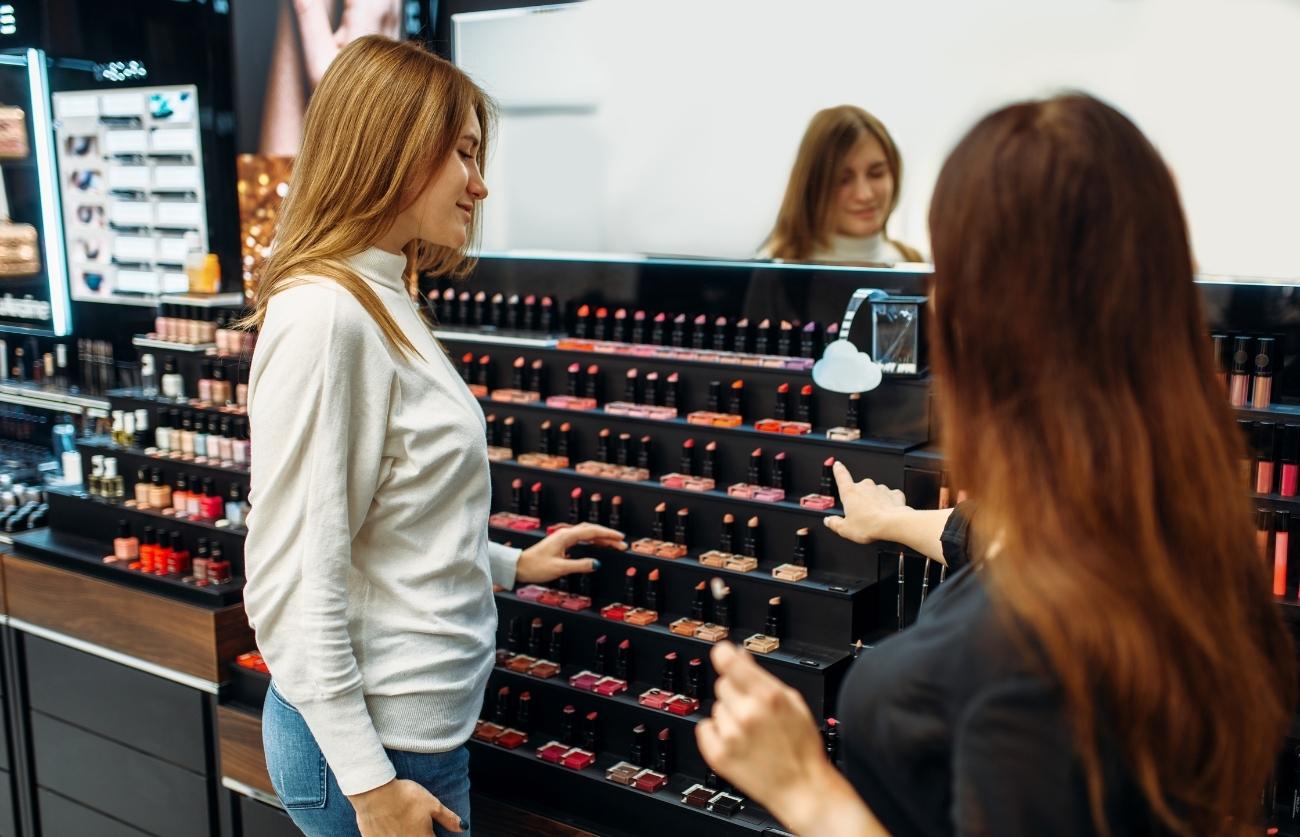Going Beyond Beauty AR In Your Retail Store To Drive More Sales

'Try more, Buy more' has been the mantra for cosmetic brands using Beauty AR in retail stores. Many stores have opened up again in the post-pandemic era. However, the key question now is how do brands go beyond the basic Beauty AR? How do brands make it mainstream by providing a more seamless and valuable experience for their customers?
Existing Beauty AR in retail
Say Hi to your new in-store companions that will help you in finding your perfect look. Digital kiosks and smart beauty mirrors use Augmented Reality(AR) to provide a virtual makeup try-on feature. They help consumers visualize how they would look with, let's say, a particular hair color. However, brands are not realizing the true potential of Beauty AR. The current process is user-dependent:
- Stand in front of the kiosk/mirror
- The device will map your facial features
- Choose from the given features - lip, eyes, cheeks, or hair
- Voilà! You can now try on different shades of products in real-time
- Select from a variety of colors from the bottom of the screen
- Once you have finalized the shade, click on the buy button
- You can also click a picture and save it
Devices using Beauty AR in retail stores give you a much better perspective than a virtual makeup app. However, they lack intelligent recommendations usually provided by a beauty expert.
Customer-centric approach is missing
Makeup is a form of self-expression. It is the perfect way to express one's individuality. That is why there is not a one-size-fits-all approach in the cosmetics industry. In today's age, brands need to focus more on consumers' needs, who are always on the lookout for personalized products. But how do you customize a product for 7.9 billion people? The answer is simple- Beauty AI and not just AR.
Customers can easily select the product they want with the freedom to try out different permutations of looks within seconds. The aim of companies should always be to create a smooth customer journey.
This would result in consumers spending more quality time in their ecosystem(app or in-store devices) and building brand trust. Reports show that Beauty AI-powered solutions increase the retail conversion rate.
Difference between Beauty AI and Beauty AR
Augmented reality captures the customer's face, detects the facial features, and overlays virtual makeup in real-time. Unlike filters on regular apps, Beauty AR in retail outlets gives a realistic view of how customers look with actual makeup.
Artificial Intelligence(AI) takes it one step further. An advanced recommendation system facilitates near-perfect guidance to users based on digital skin tone impressions and AI-based skin health recognition algorithms. So, when a customer clicks a photo, the device also recommends different shades and colors depending on the person's skin type.
From finding the perfect foundation shade to trying different lipstick, the user-friendly experience, and accurate prediction brings consumers closer to brands.
Why does your brand need Beauty AI in retail?
Beauty AI in stores is not a luxury but a necessity. It makes shopping easy and fun. Anyone who has been in a cosmetic store and tried endless shades will tell you that the entire process is a hassle! With smart mirrors in shops, customers can instantly try and shortlist products.
The Beauty AI can suggest different looks by skin type, occasion, and multiple visual parameters. This helps in cross-selling products that go well together or complement an outfit and drives extra revenue.
When brands simplify the customer journey, customers feel more comfortable. One happy customer brings more people to the store, which sets off a chain reaction and increases footfall. This entire cycle enables brands to convert first-time buyers into regular customers and increase sales.
Features of Beauty AI-powered retail kiosk
1. Gesture recognition
After the pandemic, customers prefer a safe and touchless experience. With Visual AI, it is now possible to detect gestures in real-time with a camera. There’s no need for customers to touch the screen.
2. Recommendation engine
Depending on age, skin tone, eye color, skin health, and a host of other visual parameters, the retailer can recommend suitable cosmetic products. One also has an option of providing preset looks for multiple occasions, days, and festivals.
3. Real-time comparison and evaluation of products
The device can capture photos and record real-time videos of customers. It allows them to compare their final looks.
4. Data analysis
In-store digital kiosks and mirrors collect customer data such as age, preference, popular products/shades, and much more. Companies can leverage this to study how customers interact with their brands, strategize their marketing communications, and also derive insights for new product development.
5. Frequent buyer programs
A highly personalized and seamless experience for frequent buyers can be created. The skin health of the consumer can be tracked over a period of time and accordingly, special offers and loyalty programs can be weaved.
Do you want to elevate your retail customer experience using our augmented intelligent stack? Talk to our AI beauty expert
Also, read- Virtual Makeup Try-On Not Just A Fad But The Future!
